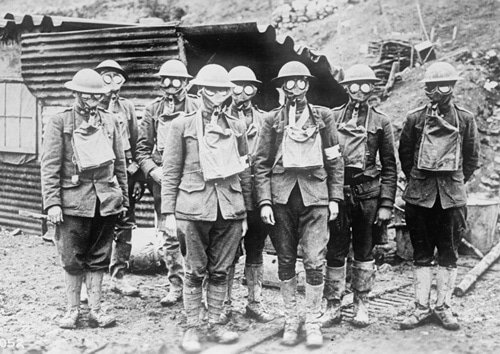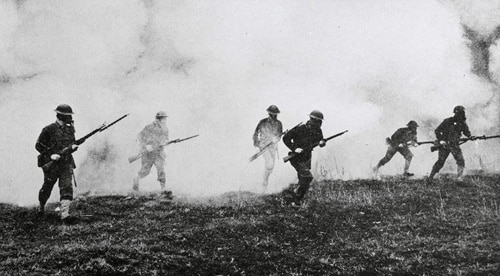You don’t need us to tell you absolutely chaotic WWI was; while there was a treaty in place that nobody was to use chemicals in warfare, once the fighting began, there was no stopping it. We simply can’t even begin to understand what it was like to be huddled in a trench just waiting for deadly gas to blow over, so you could continue on. But what we can tell you are the truly horrifying facts surrounding the gas and chemicals used.

The first major gas attack happened on April 22nd, 1915 and it was when German forces opened 6,000 cylinders of chlorine gas on French soldiers. Once the wind was just right, the gas was released to drift over French troops. While this was the first major attack, this wasn’t the first time chemicals had been used, in fact, the French were the first to use gas in their grenades, though the tear gas had little to no effect on German soldiers. However, when the chlorine gas hit the French troops, it was approximately 10 minutes before thousands choked to death.
The thing about chemical warfare is that it is very dependent on the climate. The wrong climate meant that gases would diminish quickly, while favorable conditions such as strong wind, sun, and especially humidity meant that gases could linger for a while and do the maximum amount of damage.
The second batch of chlorine gas was fired at Canadian soldiers, and while they didn’t know much about it, they caught on to some life-saving tricks real fast. For instance, they discovered the gas was worse near the ground and that running from it only made you choke more, in fact, the best thing to do was climb the trenches and stand very still, making you an easy target. Soldiers didn’t have gas masks yet, but they discovered holding urine-soaked cloths over their eyes, noses, and mouths was effective in holding off the effects of the gas.

Gases used in WWI were categorized by their effects, and there were four categories at the time: respiratory irritants, lachrymators (tear gases), sternutators (sneeze-inducing), and vesicants (gases that caused blistering). However, many gases were mixed together to cause the maximum amount of damage.
Mustard gas was among the most feared gas, but not because it was lethal. Statistically, it only killed about 2 – 3 percent of the people that breathed it in, what people feared most was the agony that followed after coming into contact with it. Upon breathing in mustard gas soldiers’ skin would start to blister, their eyes would start to puff up and they would begin to lose vision, and they would begin bleeding both inside and outside of their bodies as the gas was pulling their flesh away. The gas made most people vomit, and while it didn’t kill many men, it took weeks to do so.
